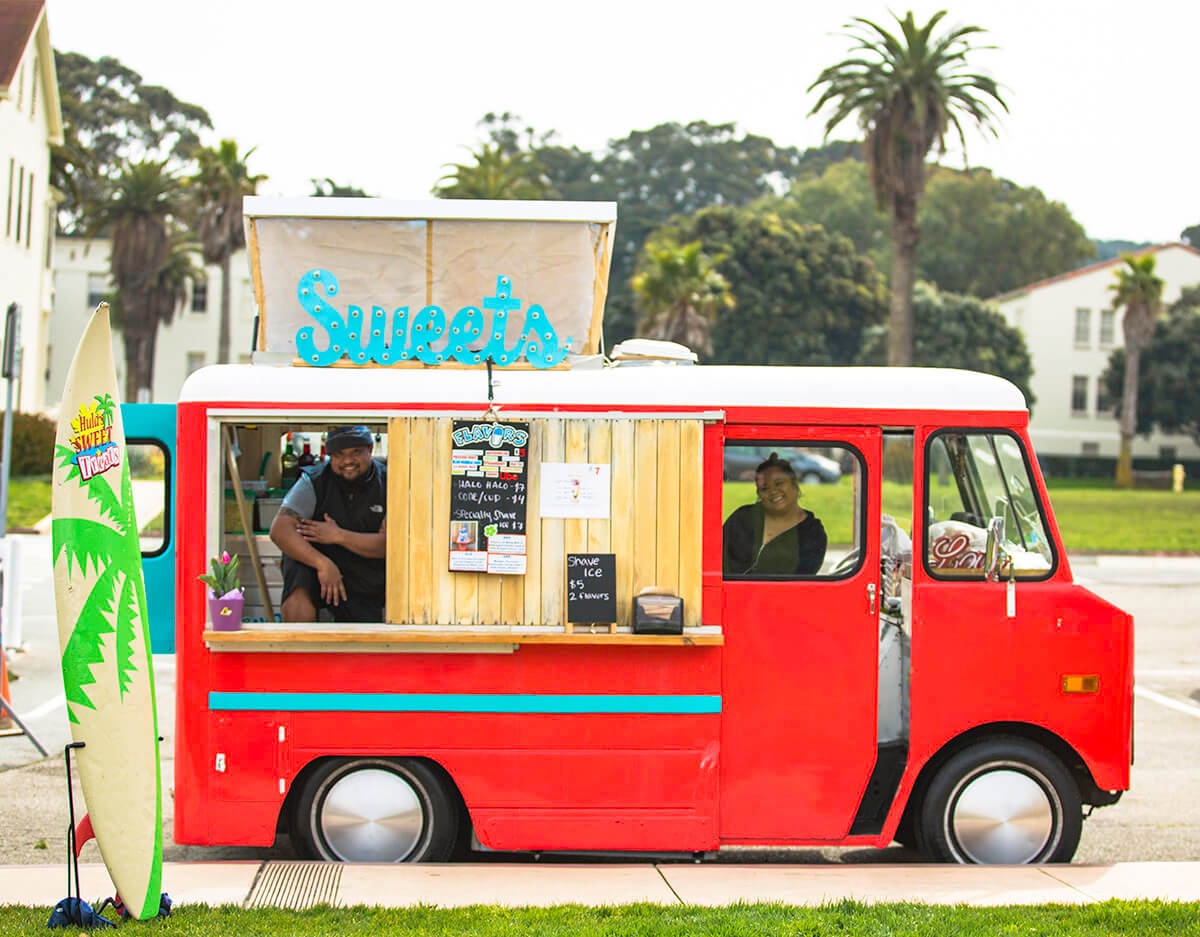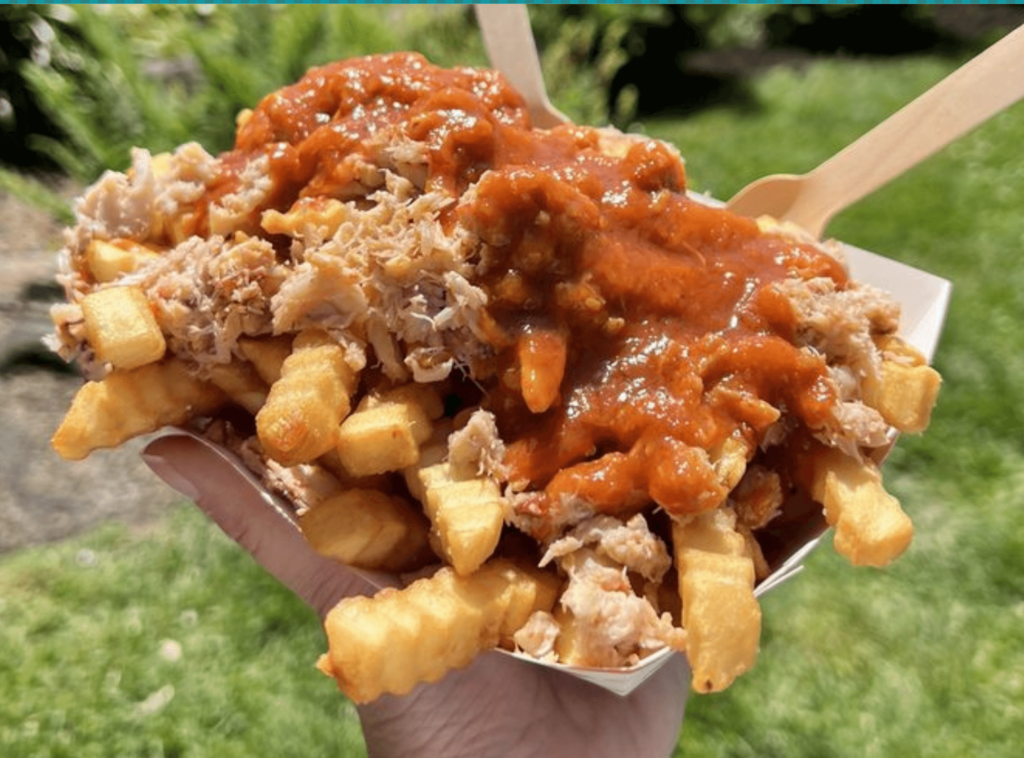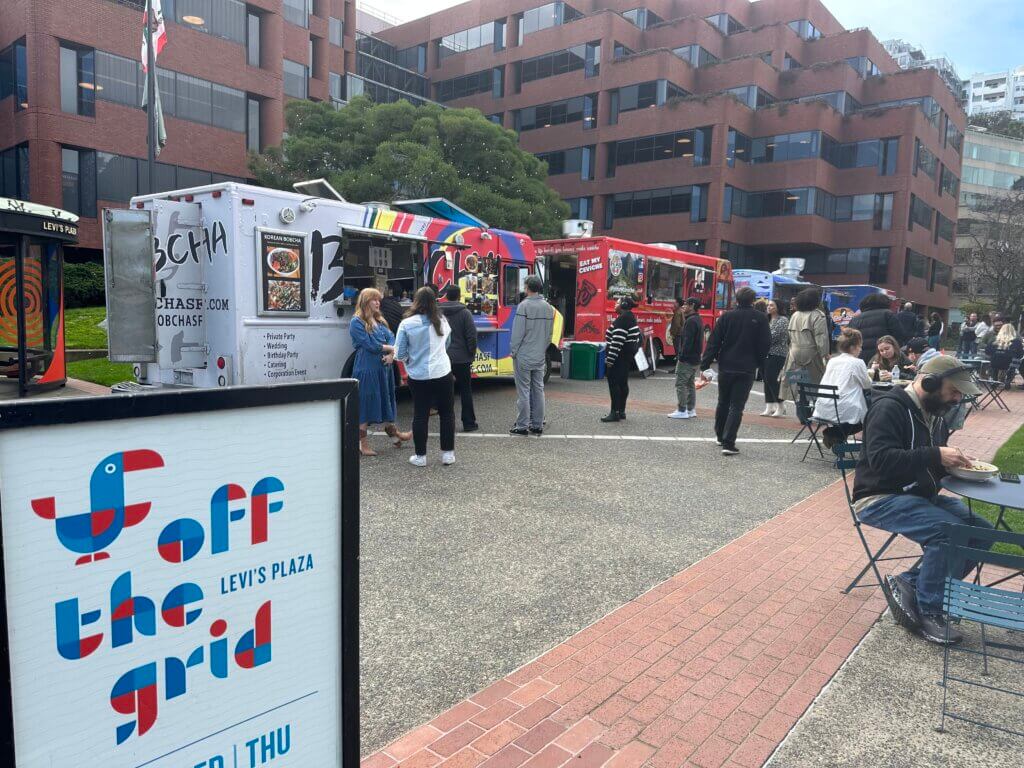
How placemaking through mobile food can help cities revitalize public space, create economic opportunity and drive social connection.
Last week, we introduced the first installment in our three-part series on why mobile food matters to cities. We looked at the ways in which placemaking through mobile food can be a powerful solution for cities during times of transition or economic downturn, bringing positive impacts on street vitality and neighborhood life.
In part two of our series, we’re diving into one of our favorite topics — and something we’ve long been passionate about here at Off the Grid — the capacity of mobile food to expand local dining options and spur creativity, while creating positive economic impacts for (oft underrepresented) small business owners and surrounding communities.
Welcome to part two of our deep dive into why mobile food matters — to cities, spaces and the people who inhabit them. Let’s get to it!
VARIETY IS THE SPICE OF (URBAN) LIFE
One of the greatest assets of mobile food as a placemaking strategy is its ability to bring exciting new dining options to neighborhoods whose existing establishments have become repetitive, or misaligned with local tastes — and in turn, making those places more valuable to the people they serve.
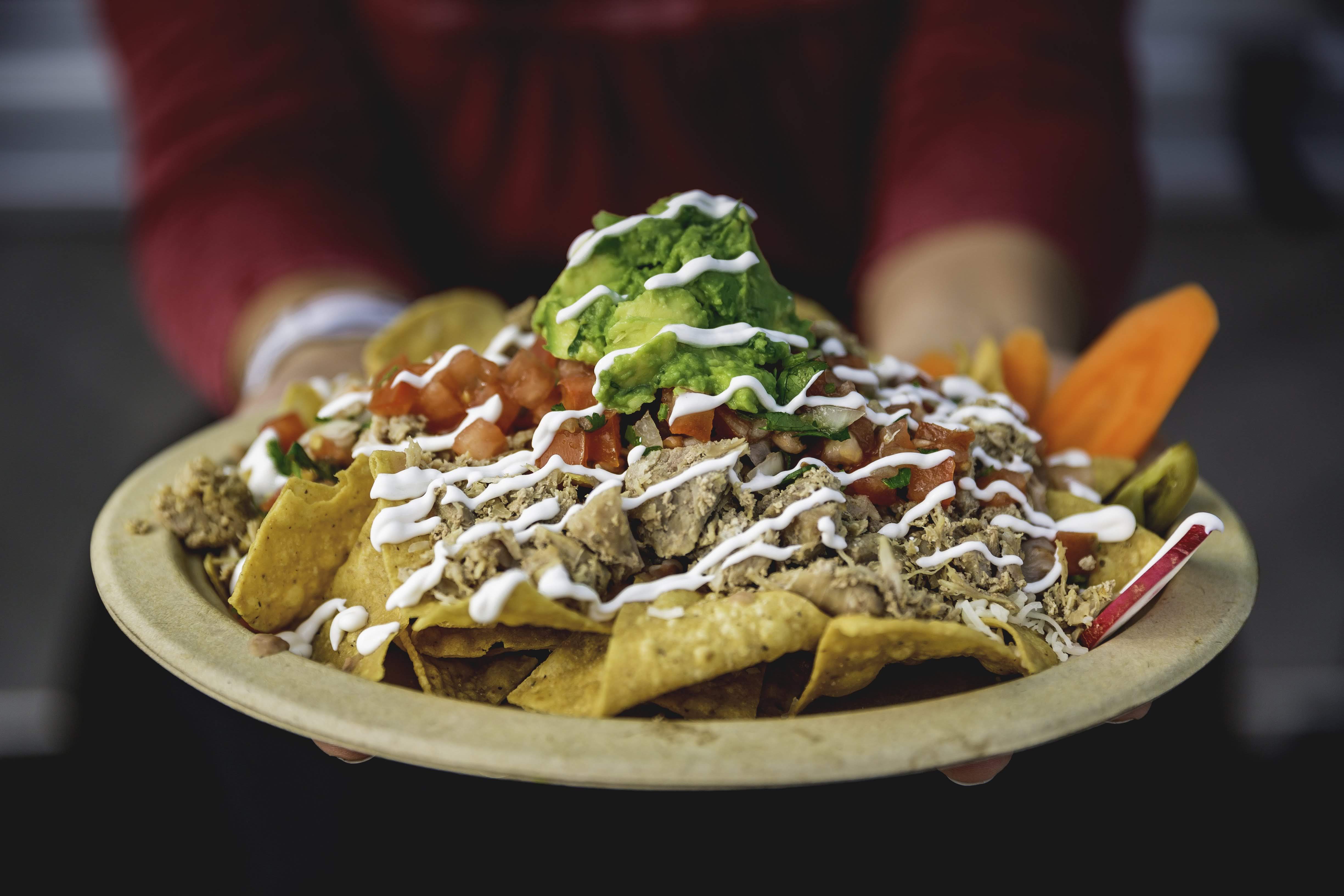
While large cities are frequently home to a plethora of food choices, research from the Institute for Justice has shown that people typically spend most of their time in smaller pockets close to their home or office.
- In the same report, researchers surveyed patrons of popular mobile food trucks in Washington, D.C., and found that a majority (60%) made their food choices for reasons of “variety” or “novelty”, typically traveling no more than two and a half blocks.
Similar research conducted by Off the Grid affirms these findings. In a survey of over a thousand guests at our public markets, “trying new food” was chosen by 35% of respondents as the primary reason for patronizing their chosen market, ahead of “finding a favorite food truck,” and “spending time with friends”. 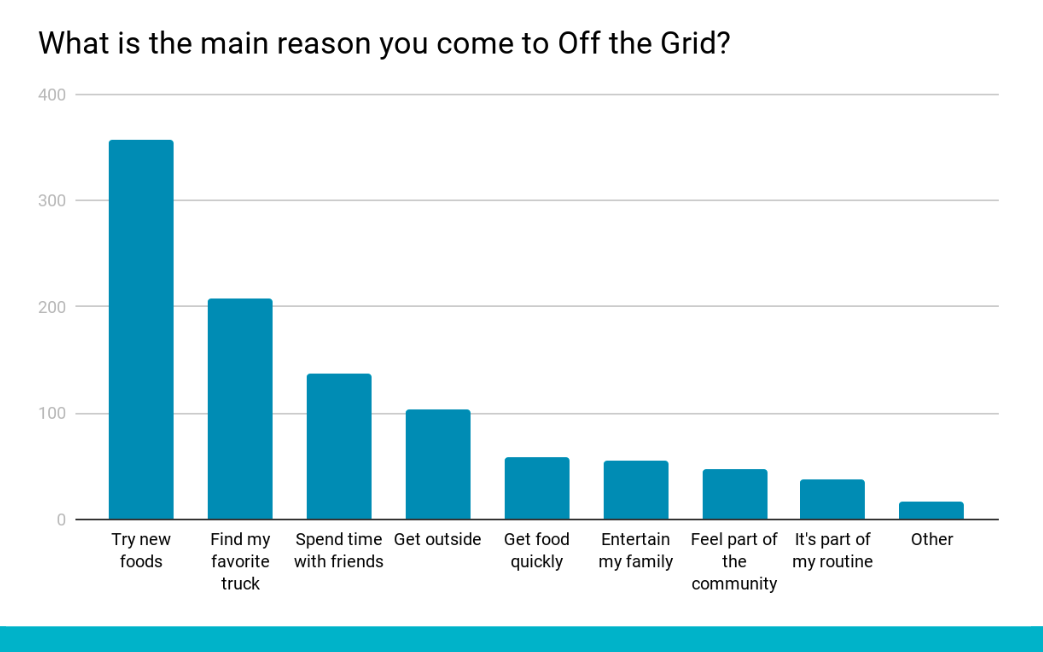 Off the Grid insights™
Off the Grid insights™
Additionally, 42% of respondents cited “proximity” (defined as convenient access from their home or office) as the single most thing of value derived from attending an Off the Grid event.
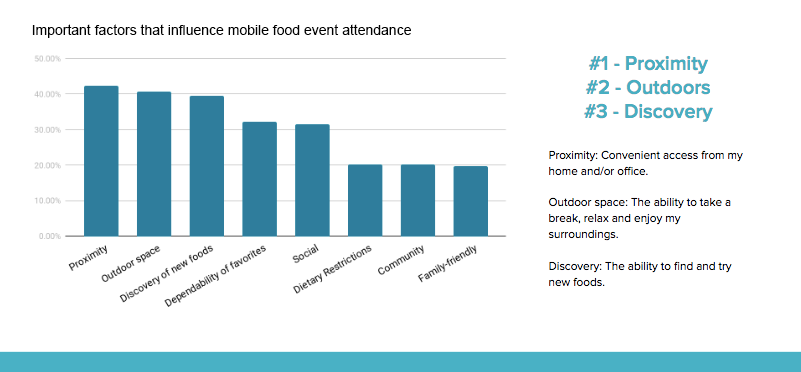
Off the Grid insights™
We’ve seen time and again that when cities give people more of what they want, those people fill their sidewalks, parks, plazas and otherwise empty lots with activity, vitality and enriching encounters.
And when it comes to what they eat, more than anything consumers want variety — especially when it meets them in the middle.
INNOVATE OR GET OUT OF THE KITCHEN
If variety is the poster child of the mobile food movement, then innovation is its close cousin.
Faced with rising food costs, growing labor shortages and limited real estate, many major cities across the U.S. are grappling with an increasingly competitive and unsustainable restaurant industry. Brick and mortar establishments require significant upfront investments, and the cost of failure can be devastating. While permanent food halls offer a way in for entrepreneurs and bring greater variety to consumers, multi-lease negotiations are complex, footprint needs are considerable and businesses largely immobile.
Off the Grid mobile food creator Hula’s Sweet Treats
But, with lower barriers to entry mitigating some of the risks imposed on low-income and up-start businesses — often minority or underserved populations — mobile food entrepreneurs may face a lesser burden of costly mistakes eating into thin profit margins. These entrepreneurs are far more likely to step out of culinary comfort zones and experiment with menu offerings (or, to start selling their wares in the first place). In a survey of Off the Grid’s community of mobile food creators,
- 36% said that having a mobile food business allows them to regularly experiment with new and interesting menu items (within limits) and an additional 28% had a “sky’s the limit” attitude, compared with just 8% who said they didn’t experiment at all.
Another anonymous respondent said that Off the Grid’s Bay Area public markets offered a “great testing ground for new and innovative food concepts.”
As Portland-based LocusLab’s 2009 “No Vacancy” report notes, “entrepreneurial temporary uses can catalyze the ‘creative economy’ by making use of otherwise underutilized space to support microenterprise models of business and social innovation.”

And while variety and creative chops are all well and good — hey, we appreciate a good fusion taco just as much as the next guy — the question remains:
What’s the impact on cities?
It all comes back to bringing people out into the streets. By enticing diners with convenient and exciting options, mobile food creates opportunities for social interaction (also improving public safety by increasing ‘eyes on the street‘) and helps to facilitate a pedestrian-friendly urban environment.
SHOW US THE MOBILE MONEY
A common complaint lobbied at the mobile food industry is that it detracts from brick and mortar businesses operating in the same neighborhoods. In large part due to the outcry from restaurant owners, as of 2011 twenty major U.S. cities had instituted a ban on mobile food vendors setting up near brick and mortar businesses selling the same or similar goods.
Meanwhile, five of the 50 largest U.S. cities prevent vendors from stopping and parking unless flagged by a customer, making it difficult for them to establish regular stops or easily connect with buyers. (Streets of Dreams)
But, research is starting to point to the fact that the opposite is true. Mobile food has been shown to invigorate local economies, stimulating demand by attracting new customers that would not have purchased anything at all were it not for the presence of food trucks, carts or stalls.
- According to the U.S. Bureau of Labor Statistics and as reported by The Economist, counties in the U.S. that experienced high growth in mobile food services have also had quicker growth in their restaurant (and catering) businesses.
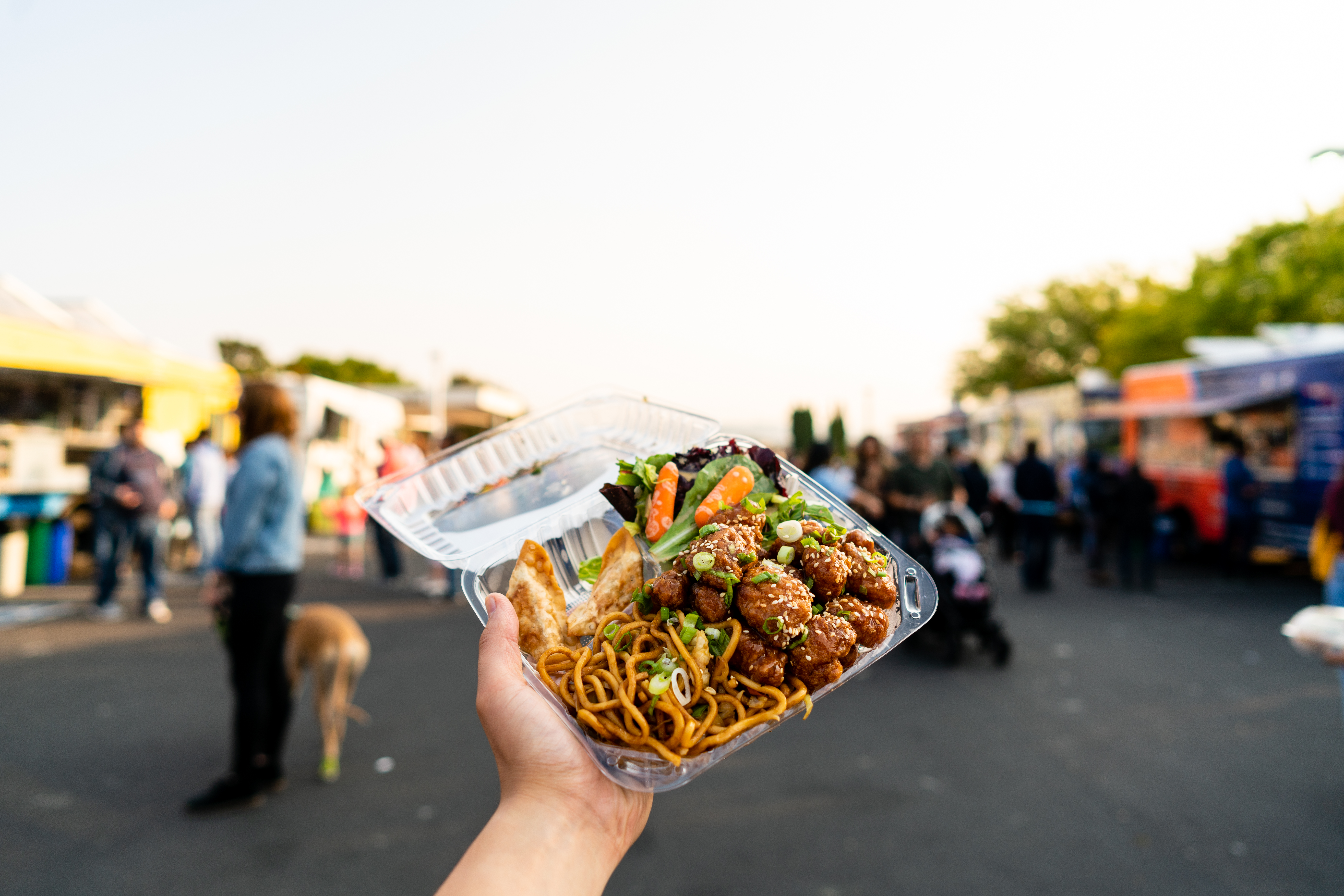
Off the Grid mobile food creator Twister serves Asian fusion in Foster City, CA
The report states that “since 2010, the number of restaurants in Seattle and surrounding King County has grown by 16% in spite of a thriving food-truck scene. In Travis County, Texas, which includes Austin, the restaurant count has jumped 18% even as food trucks have increased more than six-fold.”
Indeed, the relationship between mobile food and brick-and-mortar establishments is often more complementary than people think. Significantly for new or expanding ventures, mobile food offers small business owners a low-cost means to test out a particular neighborhood before moving there permanently.
- 30% of business owners who responded to our survey cited launching a mobile food venture as a means to test their business concept before investing in a more permanent location.
Add to this the fact that mobile food businesses create additional employment opportunities in food service, hospitality and other ancillary industries, and you have the makings of a blueprint for streetside success.
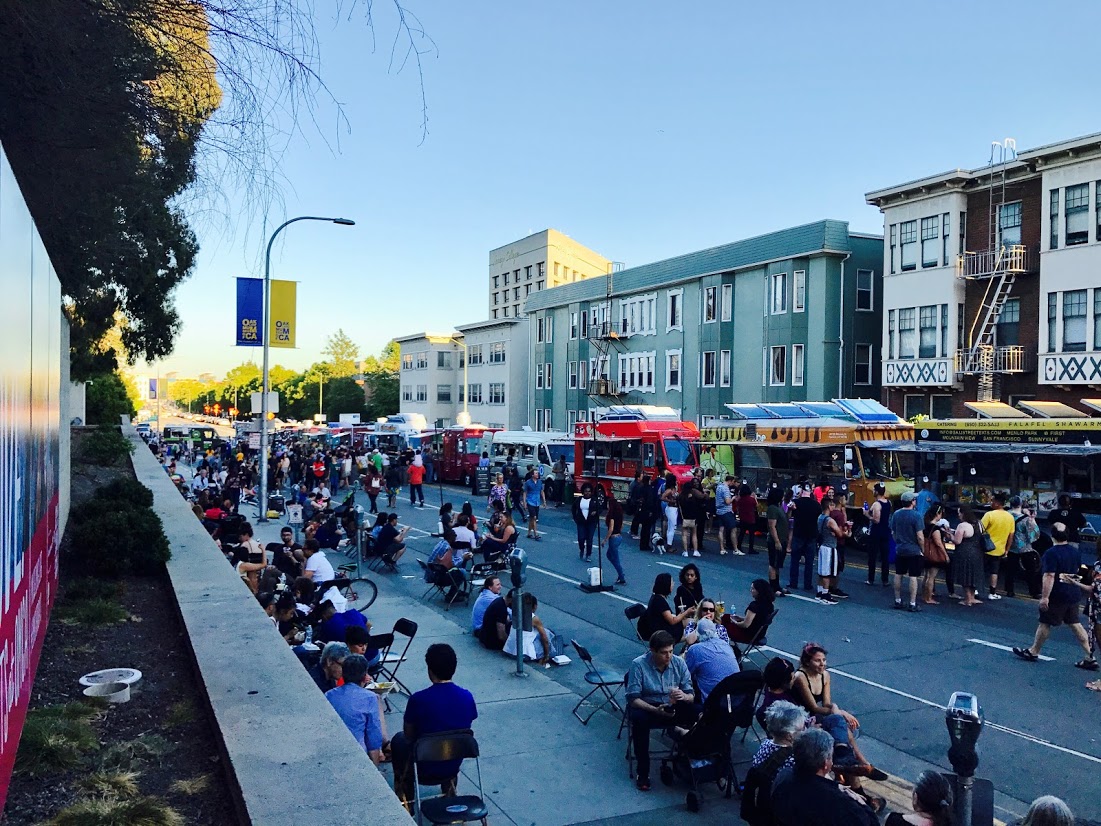
Off the Grid’s weekly mobile food event held on Friday evenings in partnership with the Oakland Museum of California
But for us, the real success story of mobile food still lies its capacity to draw people out — out from their homes and offices, out from behind their screens, and out from their comfort zones.
- As urban theorist Jane Jacobs argues, “people need a reason to be out on the street, and commercial activity is one of the most compelling reasons. The more diverse the commercial activity, the more vibrant one can expect an area of a city to be.”
We couldn’t agree more.
Next up in part three of our series, we look at how mobile food functions as a temporary “town hall”, fostering social interaction and strengthening the urban fabric of communities.

